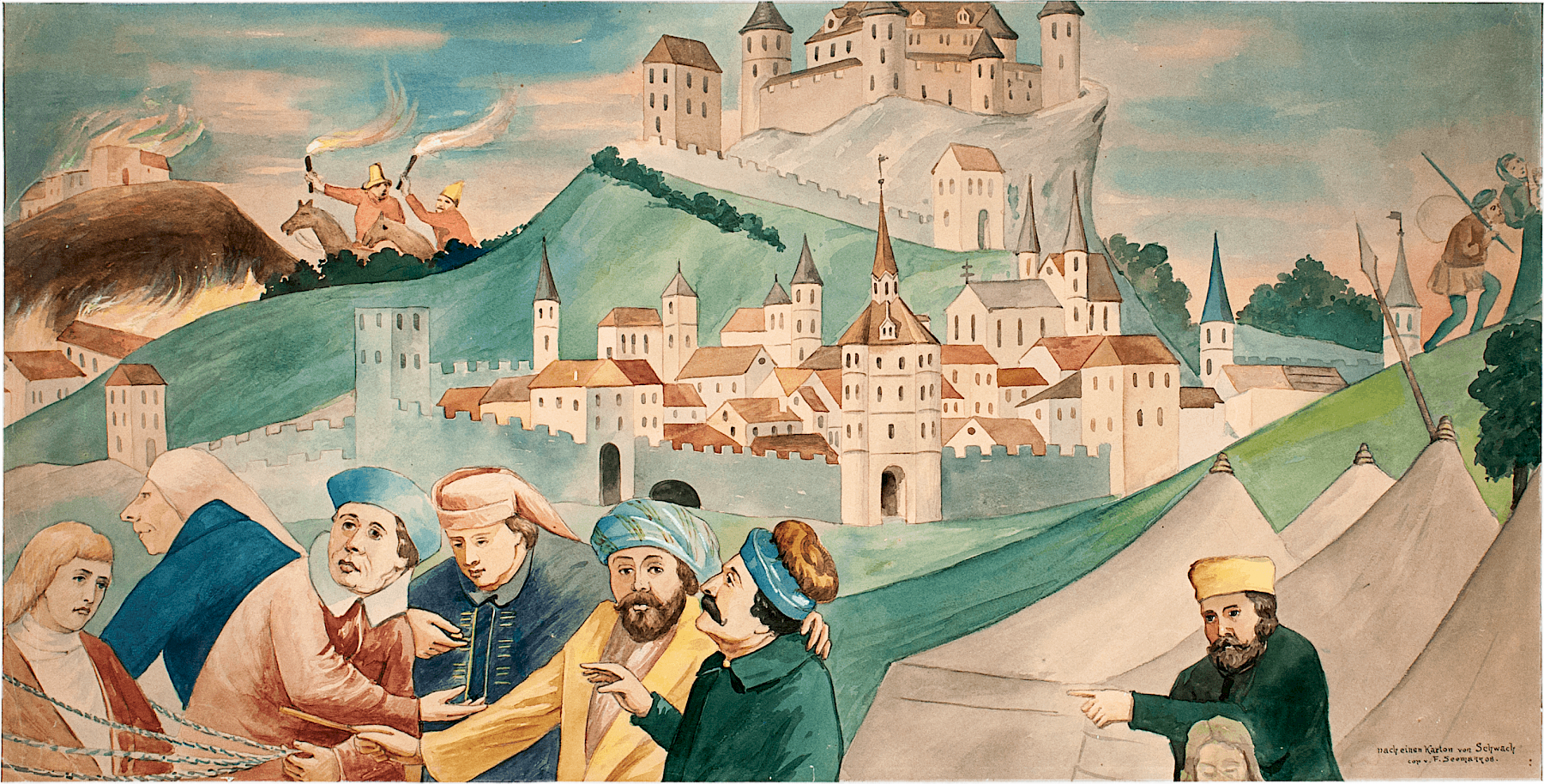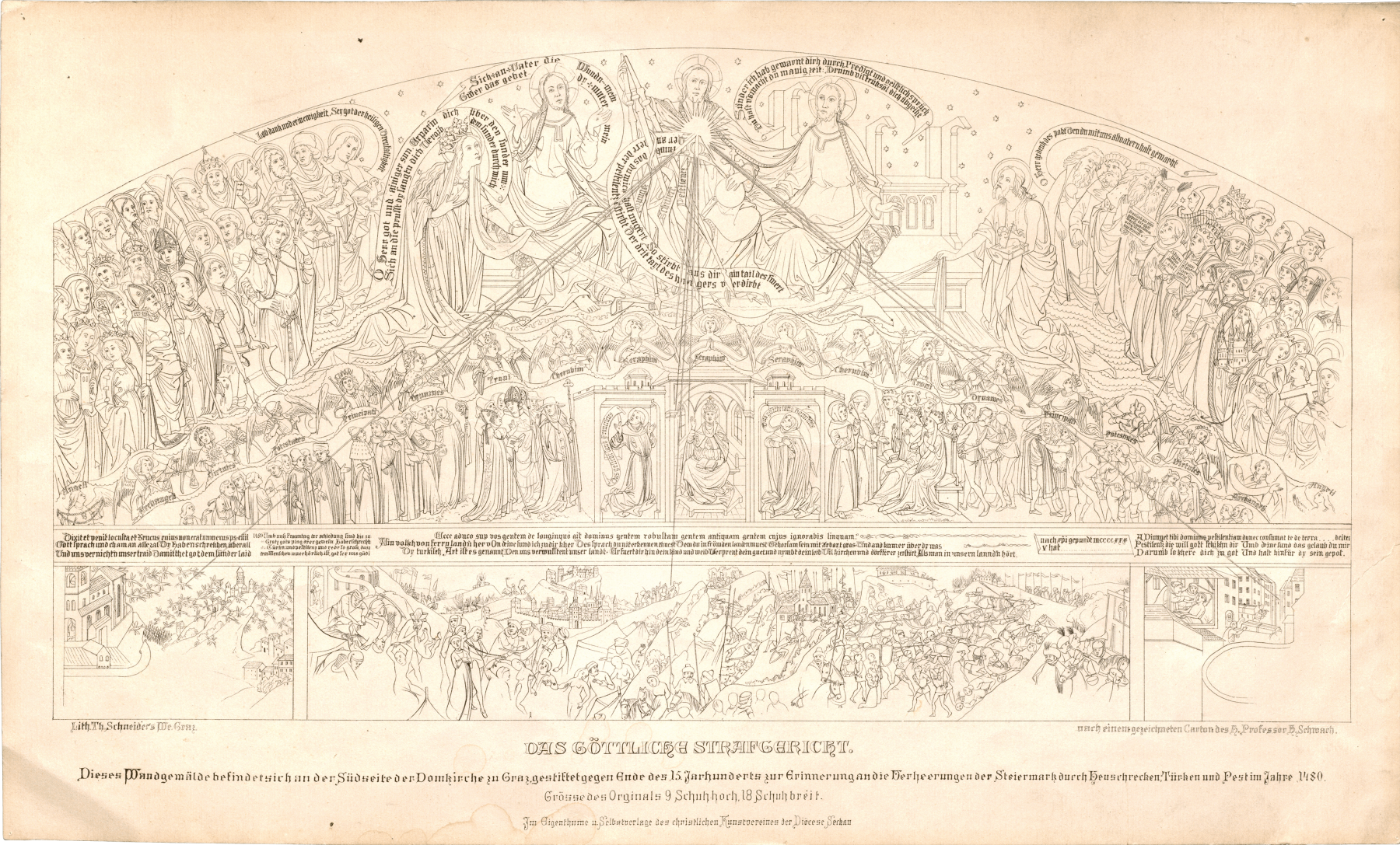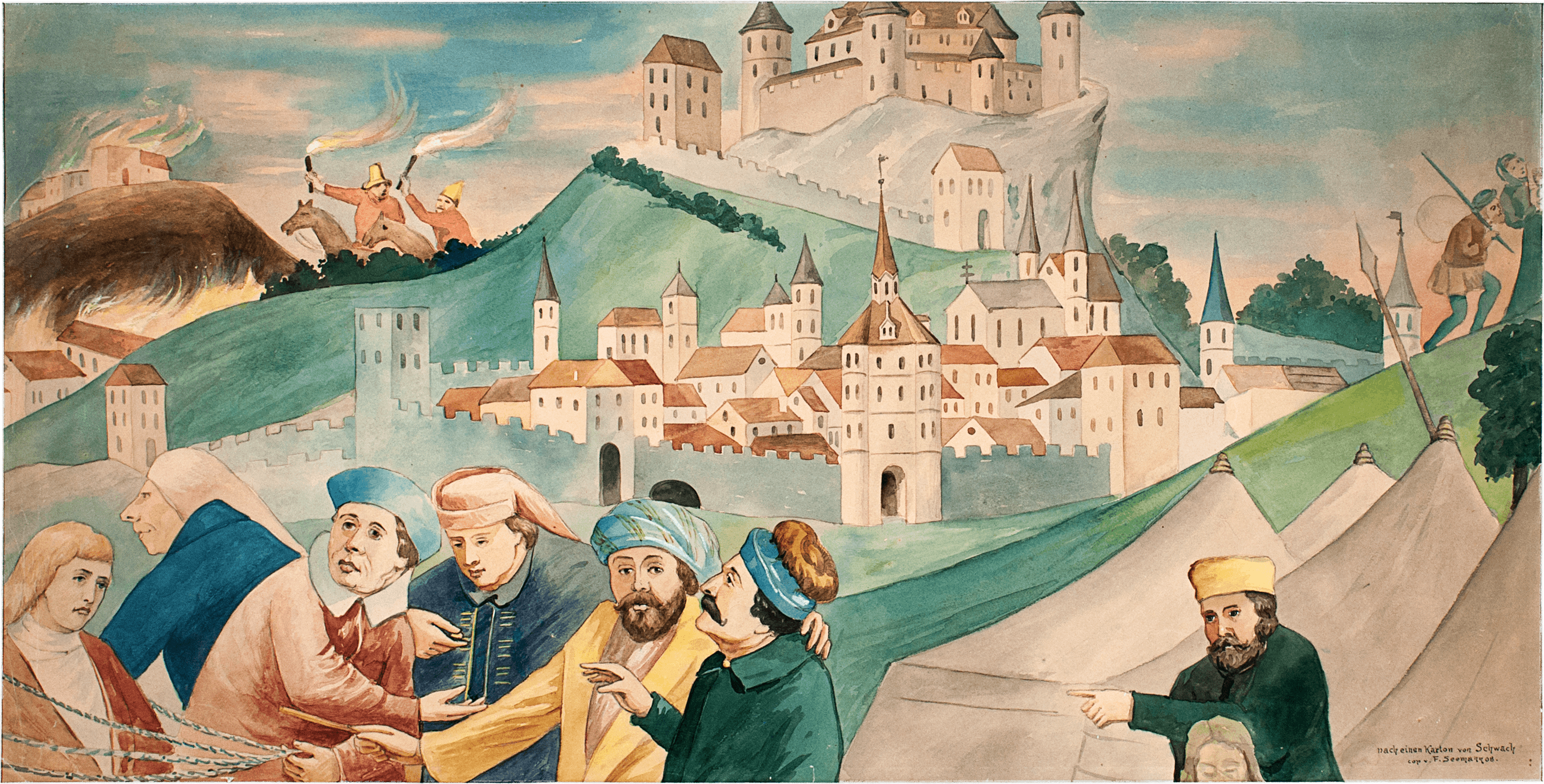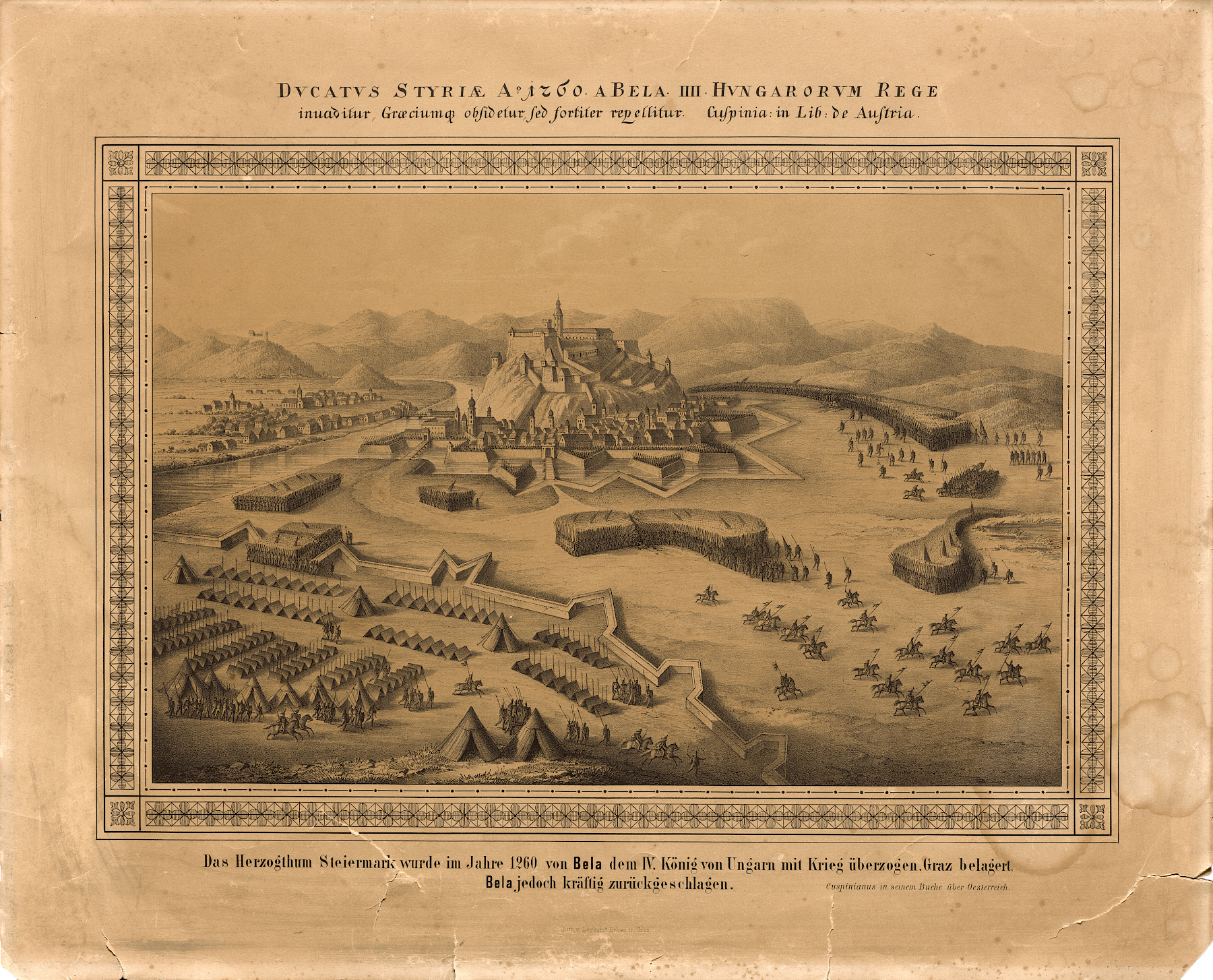
Detail from the “Plague Image” F. Seemann, 1908
“Plague Image”
In the Middle Ages, affliction and devastation, epidemics and plagues of locusts, were understood as divine punishment. The “Seven Plagues” of the Old Testament that Yahveh afflicted to Egypt were a central pattern of thinking. According to the imagination of the time, the saints had the task of plea, the “intercessio”. 1480 was a special year of terror connected to the severe devastations brought about by the roaming Ottoman hordes that even reached up to Upper Styria.
Watercolour on paper
60 × 84,7 cm
Graz Museum / Photo: Edin Prnjavorac
Medieval World View and Corporative Social Order
The Picture of God’s Scourges is divided into different levels: The upper zone presents the predominant hegemonic world order of heaven and earth, the lower one shows the plagues of Graz. The Triune God (Father, Son, Holy Spirit) is enthroned in the centre of the heavenly zone, flanked by Mary and John the Baptist as advocates of humanity before God—in the back figures of the Old and New Testament. In the centre of the earthly level, the Pope is enthroned as Christ's representative on Earth, flanked by the mendicant monks Francis and Dominic—to the right of the Pope the clerical representatives in hierarchical order, to the left the secular from the emperor down to the common people. In the lower zone, the Ottomans, probably perceived as (God’s) most fatal scourges, occupy the most space in the centre.


